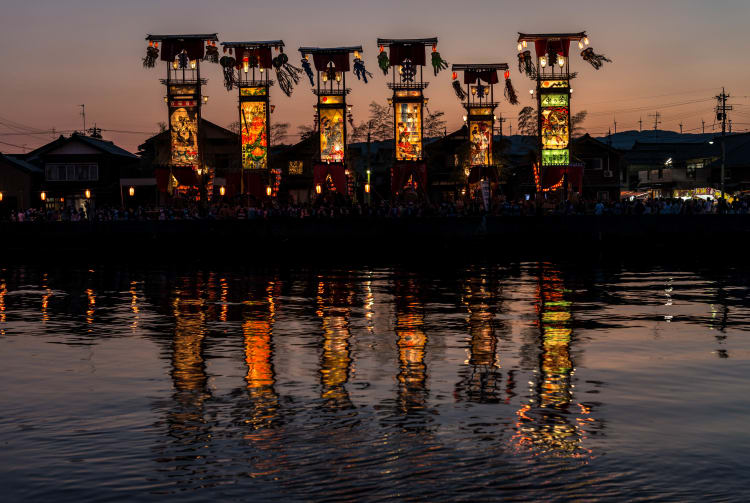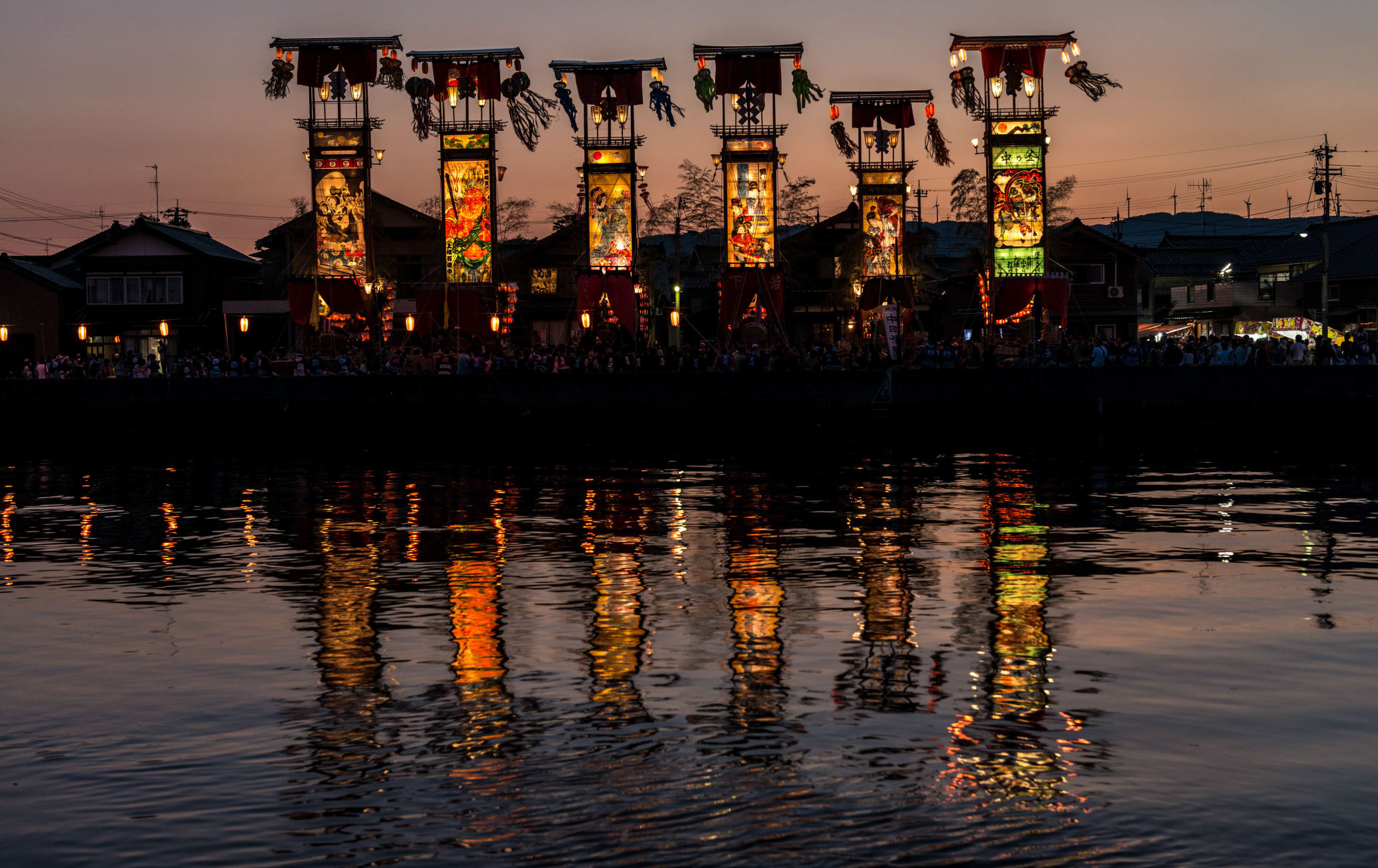Pray for the prosperity of the community at the Kiriko Festival
Spectacular Noto Kiriko festivals sweep the towns and cities across Ishikawa's Noto Peninsula from July through September. The excitement runs high as large, painstakingly decorated lantern floats are paraded through towns, followed by lighting portable shrines on fire, or throwing them into the sea. The fire is believed to burn away people's troubles and misfortunes.
Don't Miss
- The beautiful, intricately designed floats
- Lively parades of lanterns and portable shrines
- The fiery climax
How to Get There
The festivals are held all over the Noto Peninsula in different towns and cities. Kanazawa is the main transport hub in Ishikawa , with trains and buses serving the peninsula. Light traffic and scenic coastal roads make the peninsula an ideal driving destination.
To access the peninsula by rail, take the JR Nanao Line from Kanazawa Station . The journey to Wakura Onsen takes an hour by express train. Local lines continue from Wakura Onsen as far north as Anamizu.
For Wajima, on the northern tip of the peninsula, take the Hokutetsu express bus from Kanazawa. Expect the journey to take a little over two hours.
From Tokyo's Haneda Airport , there are direct flights to Noto Airport, in the center of the peninsula. From there you can rent a car or catch a bus to Wajima or Anamizu.
Quick Facts
The first Noto Kiriko festivals were held in the late 17th century
Kiriko means “sacred lantern”

Ishikawa's greatest summer festivals
There are multiple Kiriko festivals held during this season, and you can see one virtually every weekend. No festival is quite the same, with each community having its own customs and traditions.


Intricately decorated floats
Kiriko toro, or simply kiriko as they are commonly called, are the large illuminated lantern floats carried during the Noto Kiriko summer festivals. The smaller floats are carried by children, and larger ones—reaching up to up to 15 meters tall—are carried by young adults.
The floats are often decorated with gold leaf and carvings on the upper part of the roof, and the lanterns are painted with Japanese characters and illustrations. In more recent times, the lanterns have also been decorated with pictures of anime characters. Each area of Noto is proud of its own floats, and towns try to outdo each other with their energy levels and designs.
Origins of the festival
In the late 1600s, people began the Noto Kiriko tradition to ward off epidemics and other illnesses and to pray for good harvests.
Each community builds its own floats, with the sacred lanterns the focal point, and proudly parades them in their towns' central areas from dusk. Many of them have large torches attached. The processions are lively and dynamic, with festival-goers chanting, dancing and making merry far into the night.
Kicking off the festivities
One of the most enthralling of the Noto Kiriko festivals is the Abare festival in the town of Ushitsu, which kicks off the festival season on the first Friday and Saturday of July. Abare literally means “fire and violence.” Both mikoshi—portable shrines—and kiriko are paraded around the town, and carried around large bonfires. Children sit on the upper decks of the large wooden kiriko and play drums and flutes.
Rampaging portable shrines
The second night of the festival is the highlight when teams of half-naked men appear with mikoshi shrines and proceed to thrash them against the ground, drag them through rivers and toss them into fires. The festival reaches a feverish finale as the floats are set ablaze, and sparks fly. The festivities draw to a close in the early morning hours.
Differing traditions
In other areas of Noto , traditions vary—some festivals feature wild dancing, others climax with the floats being carried into the sea as fireworks light the sky. In some towns, teams of women carry the floats.
If you can't make it to the festival
Even if you are not able to attend one of the festivals while traveling in Noto , you can visit the Wajima Kiriko Hall in Wajima City, close to the Wajima Morning Fish Market, and get an up-close look at floats spared from a fiery death or watery end.


























































